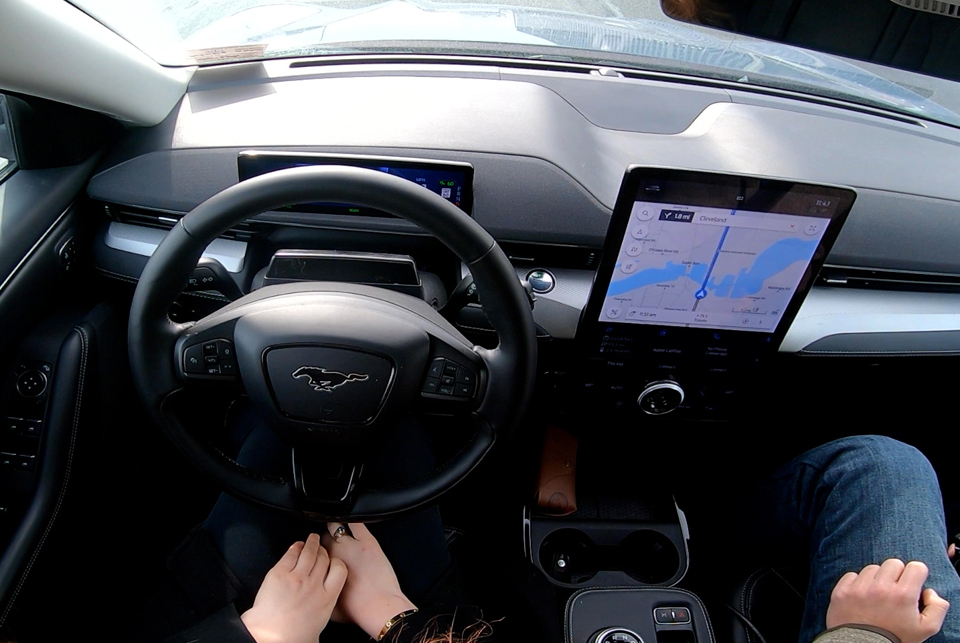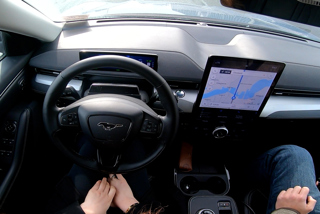A majority of fleet decision-makers would not be happy for their drivers to use a hands-off driver assistance system, such as Ford's BlueCruise, according to a Fleet News poll.
BlueCruise, which enables hands-free assisted driving at speeds of up to 80mph, is available on the Mustang Mach-E and was approved for use by the Department for Transport (DfT).
However, more than half (55%) of respondents to a Fleet News poll said there were wary of allowing drivers to use the new technology.
BlueCruise is classified as a Level 2 autonomous system and can be activated on 2,300 miles of pre-mapped motorways in England, Scotland and Wales, designated as Blue Zones.
The system monitors road markings, speed signs and evolving traffic conditions to control steering, acceleration, braking and lane positioning, as well as to maintain safe and consistent distances to vehicles ahead – right down to a complete halt in traffic jams.
Just over a third (35%) of fleets supported the use of hands-off driver assistance systems, while 10% said they were unsure.
In a recent Fleet News at 10, Paul Hollick, chair of the Association of Fleet Professionals (AFP), said: “Any form of technology which means a driver, through ignorance more than anything, thinks that they don’t need to do something is scary for us as fleet operators.
“I can just see drivers that have got that system watching a Netflix movie or trying to read a book while they’re driving home, without being sensible and proactive on the roads.
“From a fleet management perspective, I think it’s just scary. Drivers still need to drive, and drivers still need to be the centre of everything.”
Appearing alongside Hollick on April’s Fleet News at 10 webinar, Duncan Webb, fleet director at the AA, said he was “really nervous” about the technology.
“Just knowing you don’t have to be as in control of the car worries me that the role of the driver is becoming even more dumbed down... and might end up presenting a greater risk,” he added.
When using the BlueCruise system, drivers must remain attentive at all times and are monitored by an infrared camera continually.
If the system detects driver inattention, warning messages are first displayed in the instrument cluster, followed by audible alerts, brake activations, and finally slowing of the vehicle while maintaining steering control.
Similar actions are performed if the driver fails to place their hands back on the steering wheel when prompted when leaving a Blue Zone.
Eye-tracking technology could help ‘improve road safety’
The use of driver monitoring systems (DMS) inside the vehicle that use eye-tracking cameras to check driver attentiveness, are rapidly becoming a key tool for governments and carmakers seeking to prevent road accidents.
However, the results of a recent study commissioned by Seeing Machines, show that drivers still need convincing of the benefits of the technology, which monitors for fatigue and distraction.
Driver monitoring systems, it says, provide the critical link between assisted driving features and driver safety, with the technology only being noticed if required to intervene.
In a poll, conducted by Seeing Machines, more than two-thirds (70%) of those surveyed said that they believed technologies used to monitor and improve the performance of drivers had the potential to help improve road safety and reduce road accidents.
The results also revealed some interesting regional variations, with drivers in London being on average 32% more likely to believe that DMS would improve their driving, while those in high-level professional occupations were also 40% more likely than their junior colleagues to think the same.
Drivers in the North-East were the group least likely to believe that DMS could lead to improvements in their driving ability, with only 6% supporting the view that DMS could make them a more attentive driver.
“On the back of Ford’s recent announcement that its ‘hands-off, eyes-on’ assisted driver technology has been approved for use on certain motorways in the UK, the prevalence of driver monitoring systems in the vehicles we drive will only increase in the years ahead,” said Paul McGlone, CEO of Seeing Machines.
“Every year, around 1.35 million people die, and between 20 and 50 million people are injured, due to some form of transport accident caused by human error, negligence, risky behaviour, unpredictable events, or unsafe conditions.
“Getting everyone home safely is what matters and regulators around the world understand that sophisticated cameras to check driver attentiveness can help reduce accidents.”
He concluded: “The survey shows that there is much work still to be done by carmakers, suppliers and policy makers in educating the public as to the benefits of advanced driver monitoring systems and the regulatory changes which will make it an unavoidable legal requirement in the decade ahead.
“Even so, the results indicate that most UK drivers are receptive to these changes and are willing to try out a technology with clear benefits for driver safety, as DMS technology becomes as commonplace as the seatbelt in the years ahead.”






















Login to comment
Comments
No comments have been made yet.